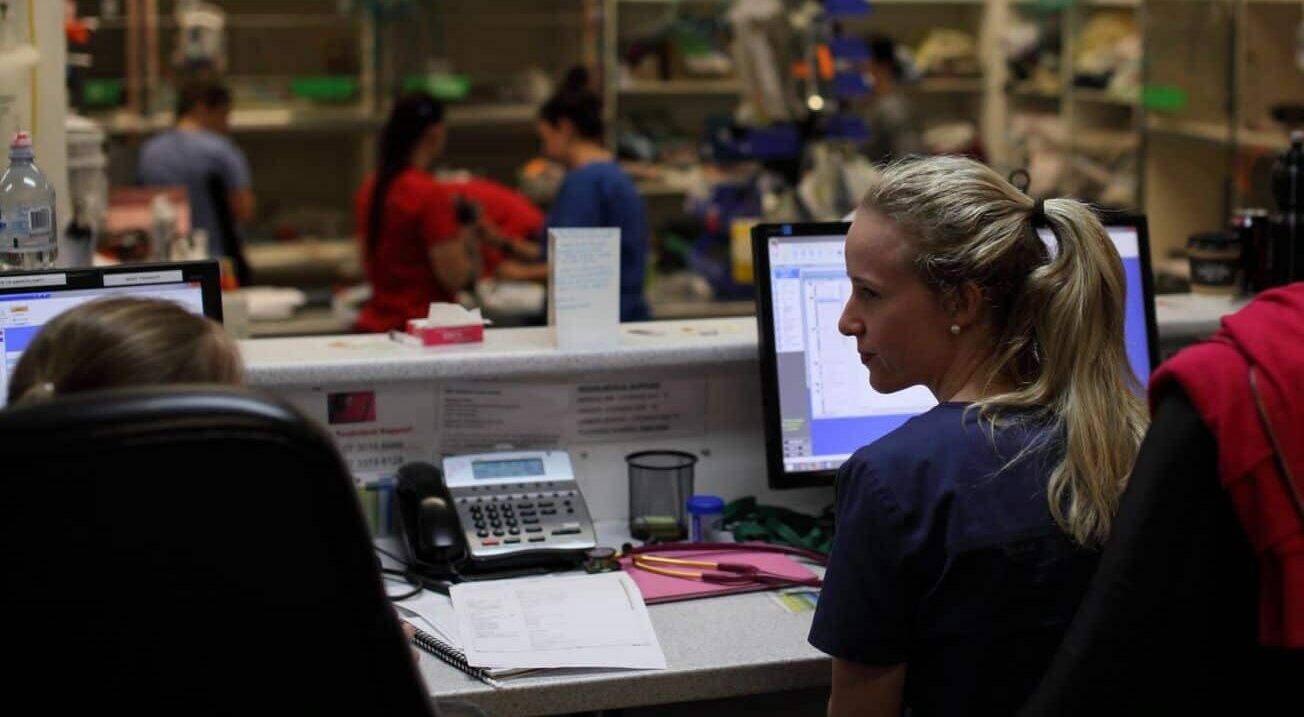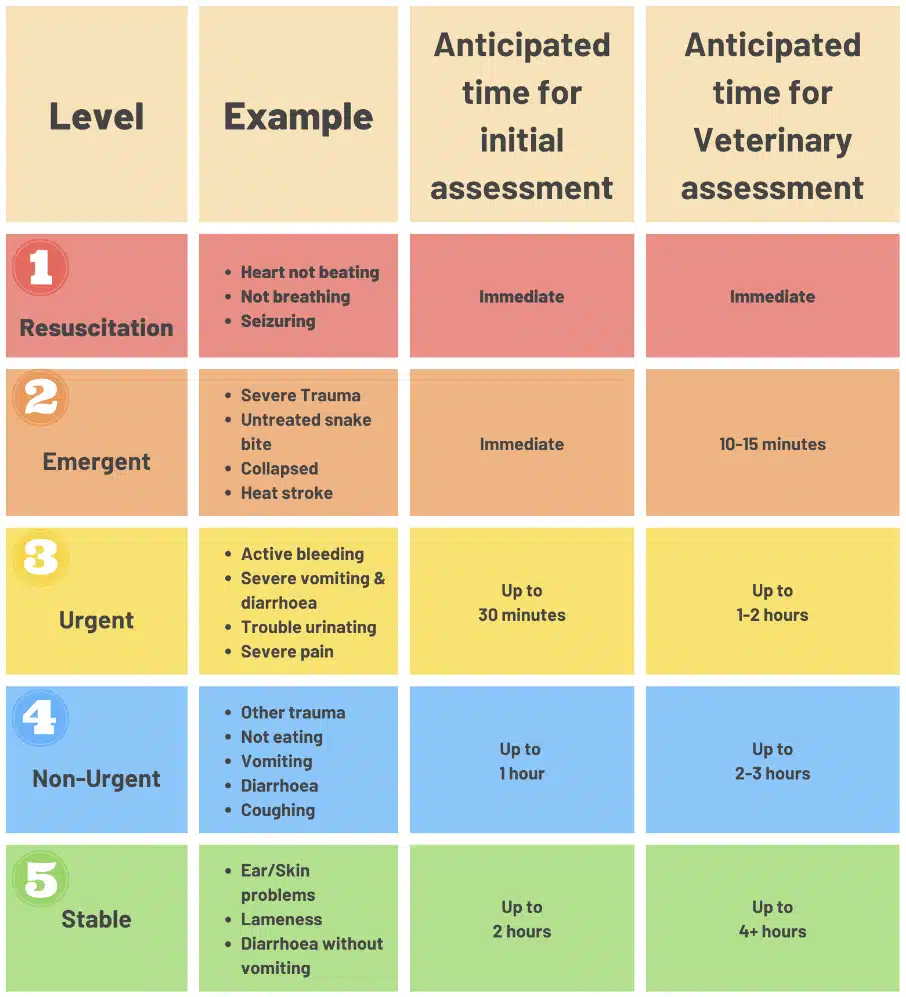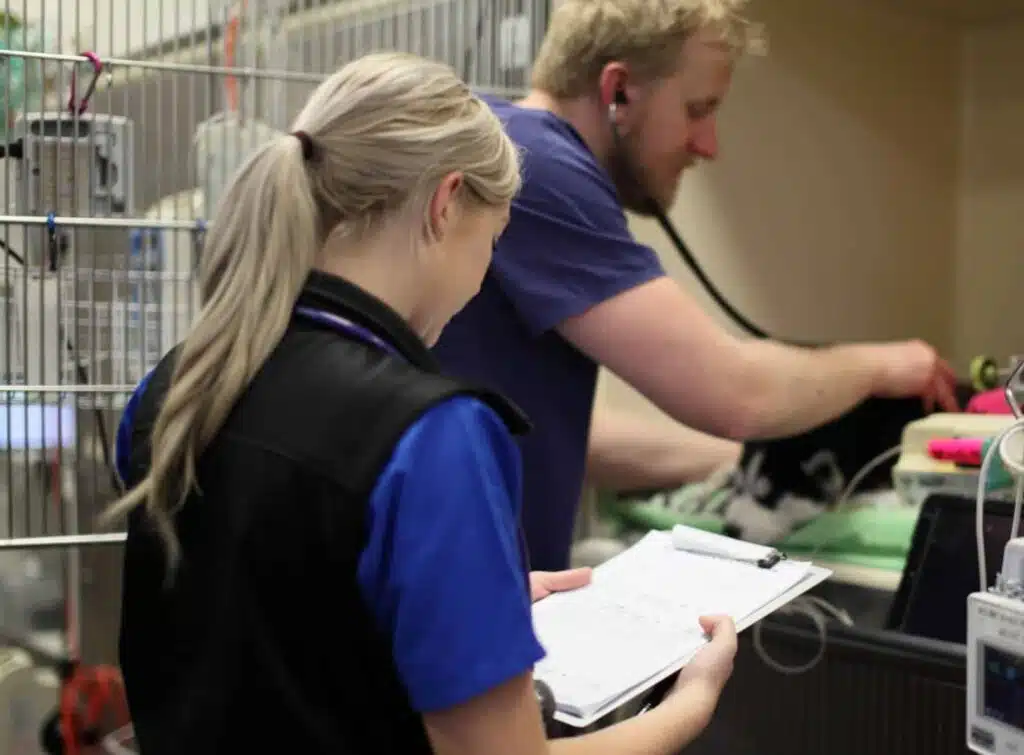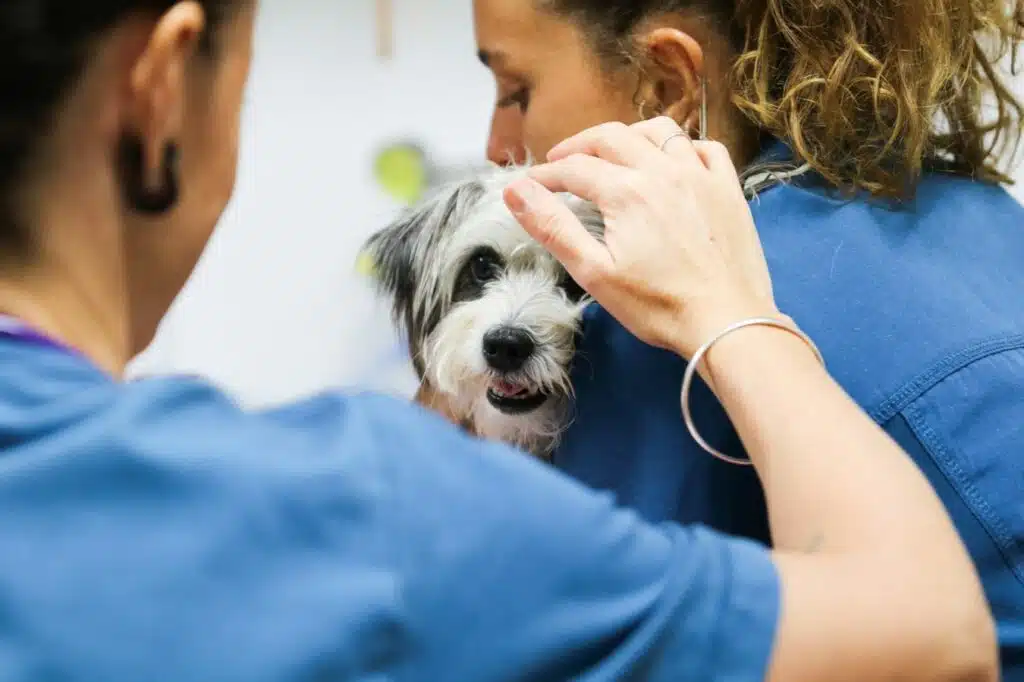Australia has some of the highest rates of pet ownership in the world. With the majority of households owning one or more pets, and more pets in the country than people, it should come as no surprise that Australians love our pets. But with so many pets, this can also lead to long waiting times in veterinary emergency.
This has become even more significant in recent years due to the effects of COVID-19, where many people turned to pets for companionship in times of isolation. In a study conducted by Animal Medicines Australia, the rate of pet ownership in Australia increased significantly from 61% – 69% from 2019 to 2021, led by a surge in dog ownership. That’s an additional 2 million pets requiring veterinary care!
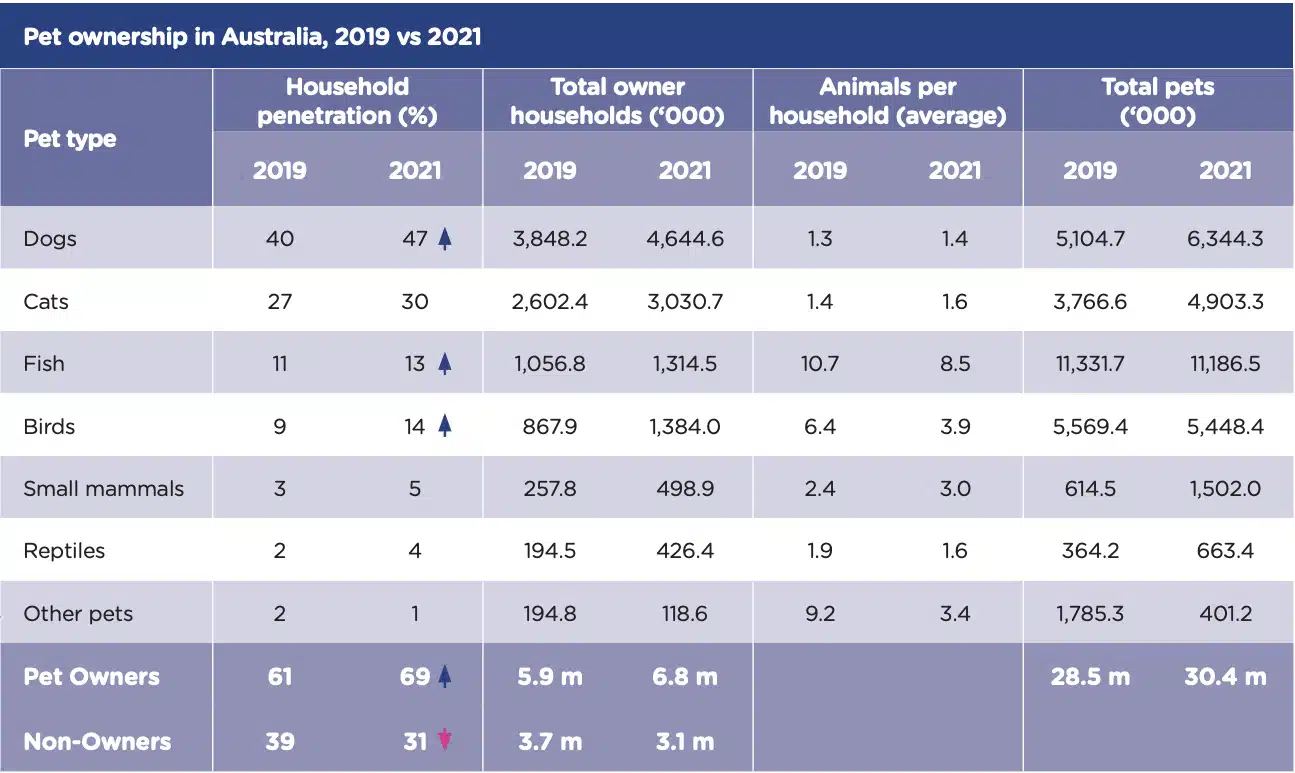
And with this massive influx of pets since COVID, demand for veterinary services has never been higher. While this is excellent for veterinary business, with schedules fully-booked and waiting rooms more packed than they’ve ever been, it’s not of course without its challenges to the teams needing to provide veterinary care. More patients are waiting to be seen than ever before, and if you’ve worked in a vet clinic at any point in the last couple of years, you’ll have noticed that it’s a significant challenge facing the industry.
The Impact
Waiting times are a big part of this challenge – not just for pets and their owners, but for veterinary staff too. Many of the challenges behind extended waiting times, particularly in the emergency department, can be attributed to an imbalance between numbers of available veterinarians and rapidly increasing demand for veterinary services due to these higher levels of pet ownership.
To help put this into perspective, we’ve created the graphic below, which offers a comparison between the statistics of staffing in human and veterinary medicine in Australia. While it’s easy to make a comparison between the two sectors, it’s immediately obvious that the distribution of patients vs. veterinary professionals is vastly different within each industry. Vets on average will be accountable for 10x the number of patients of their human counterparts, making this workload difficult to manage effectively.
The popularity of pets in Australia isn’t going to change any time soon, and the growth of the veterinary industry is an ongoing effort that requires continual improvement. So what can we do in the mean-time to alleviate this concern? How can veterinary professionals manage waiting times in their clinics? And how can you help your clients become more informed as to why their waiting is necessary?
Let’s take a closer look at some strategies that you can implement that may benefit your staff and your clients.
Setting Client Expectations
The first step in creating a smoother and more pleasant client experience starts with education. Keeping your clients informed will contribute to their understanding of certain practices within the clinic and why they are necessary. And while most clients would love to have their animal attended to immediately, most will be understanding provided they have been informed as to why they are waiting and when they will be seen.
So what are the methods you can use to not necessarily decrease the waiting time, but inform a client’s perception of why they need to be waiting?
Comparing a veterinary waiting room to a human emergency department can be a useful comparison, and one that most clients will relate to from their own lived experience. In an emergency department, waiting is common, and those with life-threatening illness must always take priority. This is the exact same in a veterinary clinic, whether this is a small GP clinic, a larger practice, or a veterinary emergency practice.
Inform clients about the nature of triage – this is a necessary practice in both human and veterinary medicine to improve patient outcomes. Education on triage can be achieved through a handout, infographics placed in the waiting room, or communication with clients upon presentation to the clinic. Clients should be aware that in an emergency setting, all patients must be triaged based on the severity of their condition.
And while this means that patients with life-threatening illnesses are seen to as quickly as possible, it conversely results in increased waiting times for patients with mild or lower-priority illnesses. It can also be important to emphasise that limited staff are available, and those on duty are tasked with everything that walks (or is carried) through the door. This means that the staff on shift must be prioritising their time to provide attention to the animals that need it most.
Lastly, you may be able to help clients to shift their mindset. Nobody likes to wait, especially in a situation where a loved one may be unwell. It can be frustrating if you’re left waiting without an idea of when your pet will be seen. And although it may seem counterintuitive, being left waiting can actually be viewed in a positive light.
Yes, waiting can actually be a good thing!
Triage means that any patients that are waiting will generally have less critical conditions than those who are seen immediately or soon after presentation. So it can be reassuring to a client if they understand that their pet is okay to wait before being seen, and that it will be treated as soon as possible after more critical cases have been dealt with.
Managing an Increasing Workload
Efficient use of staff resources and time is paramount, and poses a challenge not only to veterinary emergency settings, but to the wider profession as a whole. Do you have highly skilled staff performing non-veterinary tasks when they could be making better use of their time? Are more urgent or pressing matters being handled by one staff member when they could be more efficiently shared between the team? It can be important to recognise how trained staff time can be dedicated towards more important tasks in a veterinary setting.
This change begins with veterinarians, who should focus primarily on tasks that only a veterinarian can perform. It seems like common sense, but it’s not always the case. This means that valuable veterinary time should be dedicated to the most high-priority roles:
- Consulting with owners
- Offering advanced diagnostics
- Formulating and implementing treatment plans
- Other acts of veterinary science (e.g., invasive or surgical procedures)
Although it may not be exciting or hands-on like many other parts of the veterinary job, specific time must also be allocated for recording history and veterinary note-taking, as this is an important aspect of patient care. Any non-veterinary tasks should be delegated to non-veterinary staff members capable of performing these duties, such as billing, administrative work, and client communication that does not need to be directly given from the veterinarian on duty.

Nursing staff and veterinary technicians must also be given the capacity to focus primarily on tasks that are directly associated with positive patient outcomes. This includes a wide variety of tasks necessary to be performed by skilled veterinary staff such as patient care, preparation and monitoring, handling/restraint, collecting samples and running diagnostics, and preparation and administration of medications.
This means that non-veterinary tasks must be performed by an appropriate team member, freeing up nursing staff to dedicate their time towards patient care. These additional requirements are essential to operating a clinic, but are more focused on maintenance as opposed to direct veterinary care that nursing staff are skilled in. Some of these tasks include:
- Cleaning, maintaining hygiene, and presentation of the clinic, treatment area and cages
- Invoicing and other administrative duties
- Stocktake and stock management
- Basic animal husbandry such as toileting/walking
By allowing non-veterinary staff such as animal attendants, veterinary nurse assistants, and client care representatives to perform important non-veterinary duties, this will provide skilled veterinary professionals with additional time to focus on the roles where they are needed most. And while this will not be simple to implement, this is the one change that will have the biggest impact on waiting times in the veterinary setting.
Setting Professional Boundaries
Finally, the last step in managing waiting times in the veterinary clinic is simply accepting that they are going to happen. Waiting times are inevitable – it’s impossible for every single patient to be seen as soon as they come through the door. So don’t put that expectation upon yourself. Changing the clinic culture around waiting may offer the most immediate improvement to overcoming the stress of waiting times not only on clients, but on veterinary staff as well.
Although many clients may have the perception that their pet needs to be seen immediately, not all pets need to be treated immediately on presentation. It’s okay and it’s necessary for clients to wait provided their pet is not in a life-threatening situation. Try not to feel the pressure or guilt of leaving clients sitting in the waiting room.
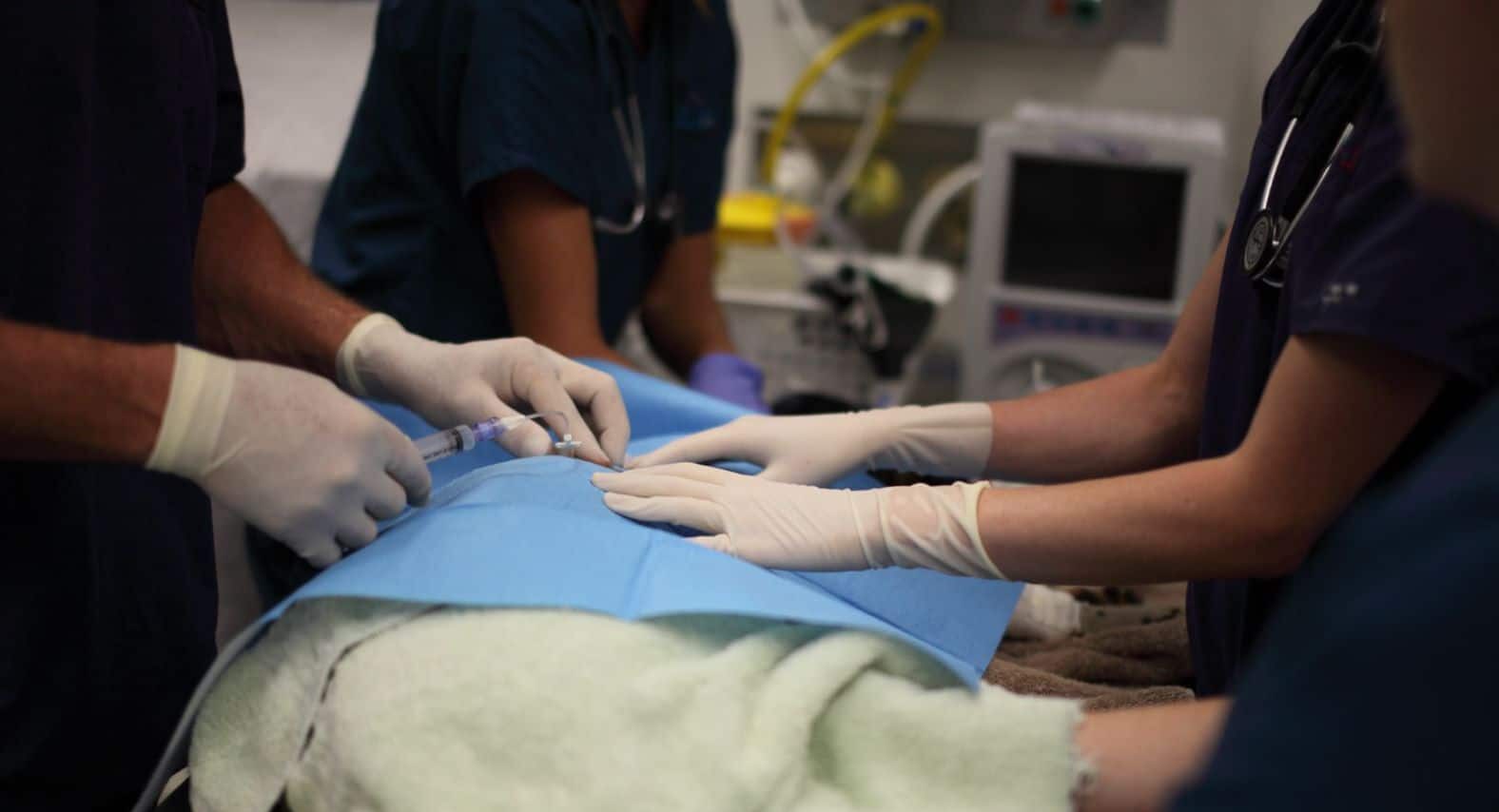
How many times have you been sitting in a busy medical waiting room to be seen, or in an ER if you’ve had a condition that wasn’t immediately life-threatening? While it can be frustrating, forming an effective team approach so that nursing and supportive staff can keep clients informed as to why they are waiting can help to minimise this frustration.
And if the workload is becoming unmanageable, it’s essential for your own wellbeing to be able to say “no”. If a task is beyond the scope of what you’re able to manage, or might consume time that could be better spent on improving patient outcomes, you need to be able to set your boundaries. Of course this isn’t simple to do in many situations, so being open and honest with your team when needed is important. Supportive teams will share each other’s challenges and help out in times of need.
Overall, increased demand for veterinary services and resultant waiting times are here to stay. There’s no single way to immediately resolve the issues they face both clients and veterinary professionals – but a culture of education, understanding, and efficient teamwork can go a long way in helping to minimise the impact of wait times.
Want to discover how the increased demand for petcare is also affecting the gold standard of veterinary care? Find out in our next feature on The Challenges of the Veterinary Gold Standard (and how to overcome them).

